“They don’t write songs about Volvos.” That is the caption for a poster that Chevrolet sells depicting the 1963 ‘split-window’ Corvette coupe. The gorgeous crimson classic Chevy crouches low and wide across the image, looking more UFO than car.
The poster neatly sums up how some cars achieve mythical status rather than serving as basic transportation. The great thing about a song like Prince’s “Little Red Corvette,” is that we can picture a car from whatever our favorite year Corvette might be (except for 1954, when the car was only available in white).
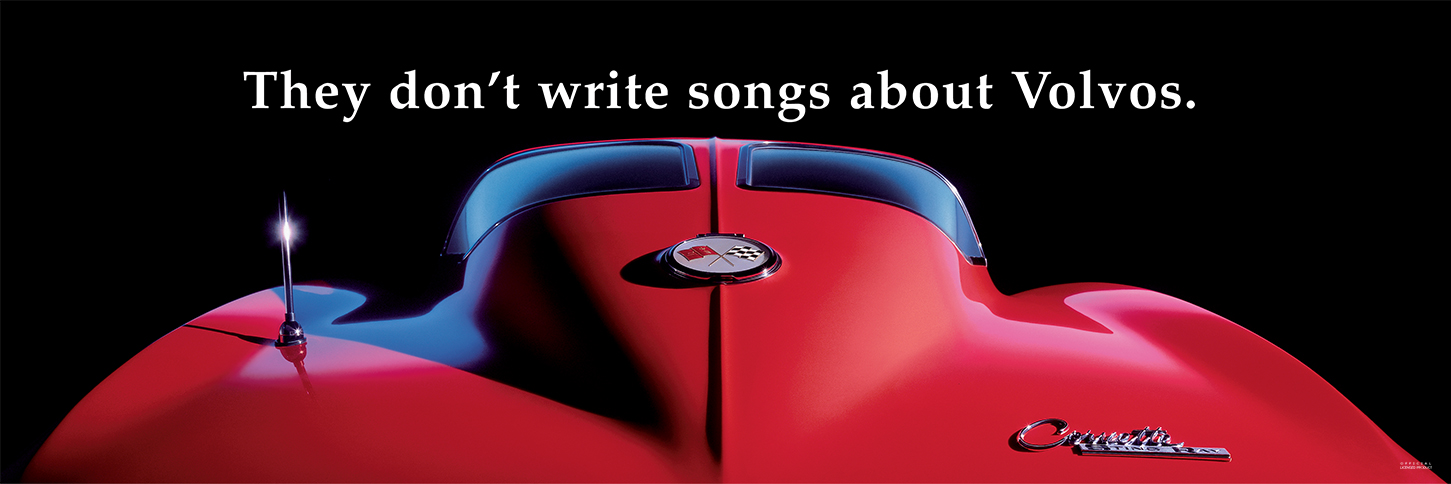
The ’63 Corvette Coupe is usually just called the “split-window,” and car enthusiasts immediately know the car in question, although early Volkswagen Beetles and the 1930s Bugatti Type 57SC Atlantic also employed two plates of glass instead of one for the rear window.
Design was king at American car companies in the 1950s and ‘60s, and nowhere more so than at General Motors, where design boss Bill Mitchell held nearly unlimited authority. When Corvette got a redesign for 1963, General Motors Art and Colour Section penned a design featuring a windsplit running the length of the car’s body. It skipped the windshield, but continued unbroken over the rear glass because of the central bar creating the split window.
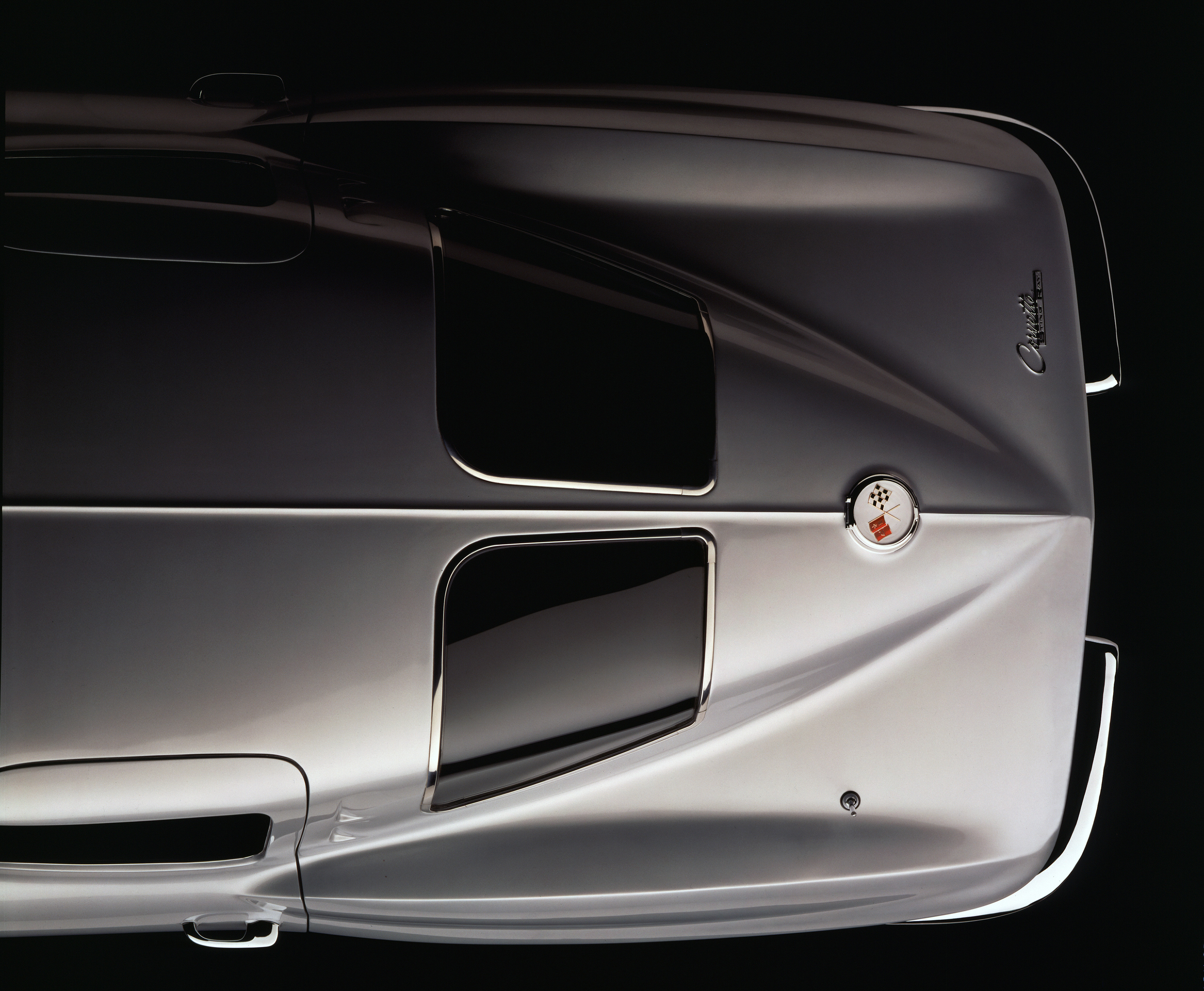
“The 1963 Corvette Sting Ray is a lot of enthusiasts’ favorite classic Corvette,” noted Corvette product manager Harlan Charles. “It was the first year of the second-generation Corvette and the first to be called ‘Sting Ray,’ with cues from the 1959 Corvette Sting Ray racer,” he said. “Further, it was the first Corvette with a coupe body style.” Until 1963, all Corvettes were open-topped roadsters.
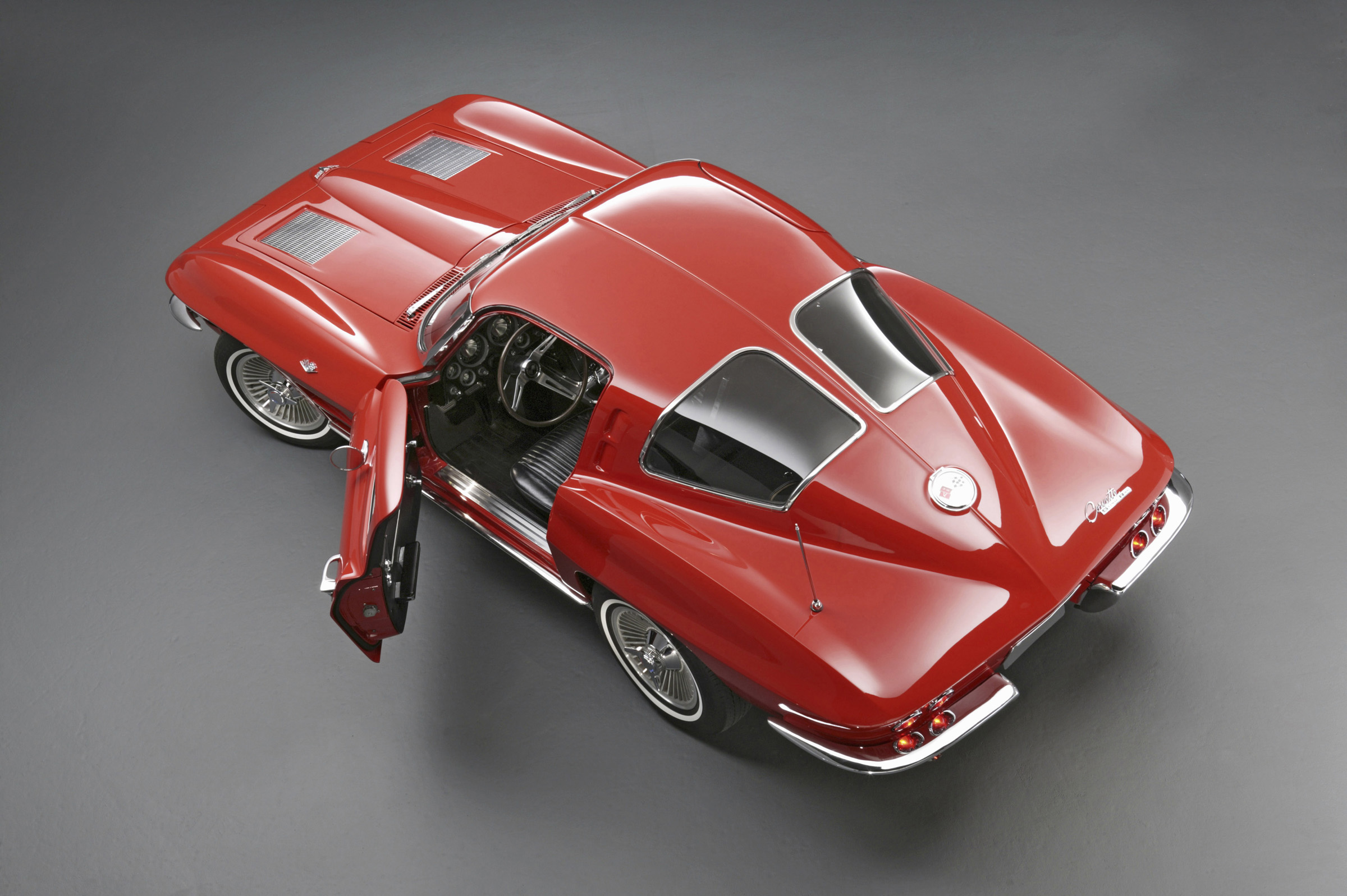
Corvette engineer Zora Arkus-Duntov hated the design flourish, and his opposition led to the split window lasting for only a single model year. Chevrolet built more than 10,000 split-window ‘Vettes in ’63 (plus a similar number of convertibles), so the car isn’t exactly rare, but it is definitely unusual.
This contributes to the car’s approximate value of $39,600 for an example in only fair condition and a price of $137,000 for a perfect concours show-quality car, according to classic car insurance specialist, Hagerty. Base price for the coupe in 1963 was $4,252.
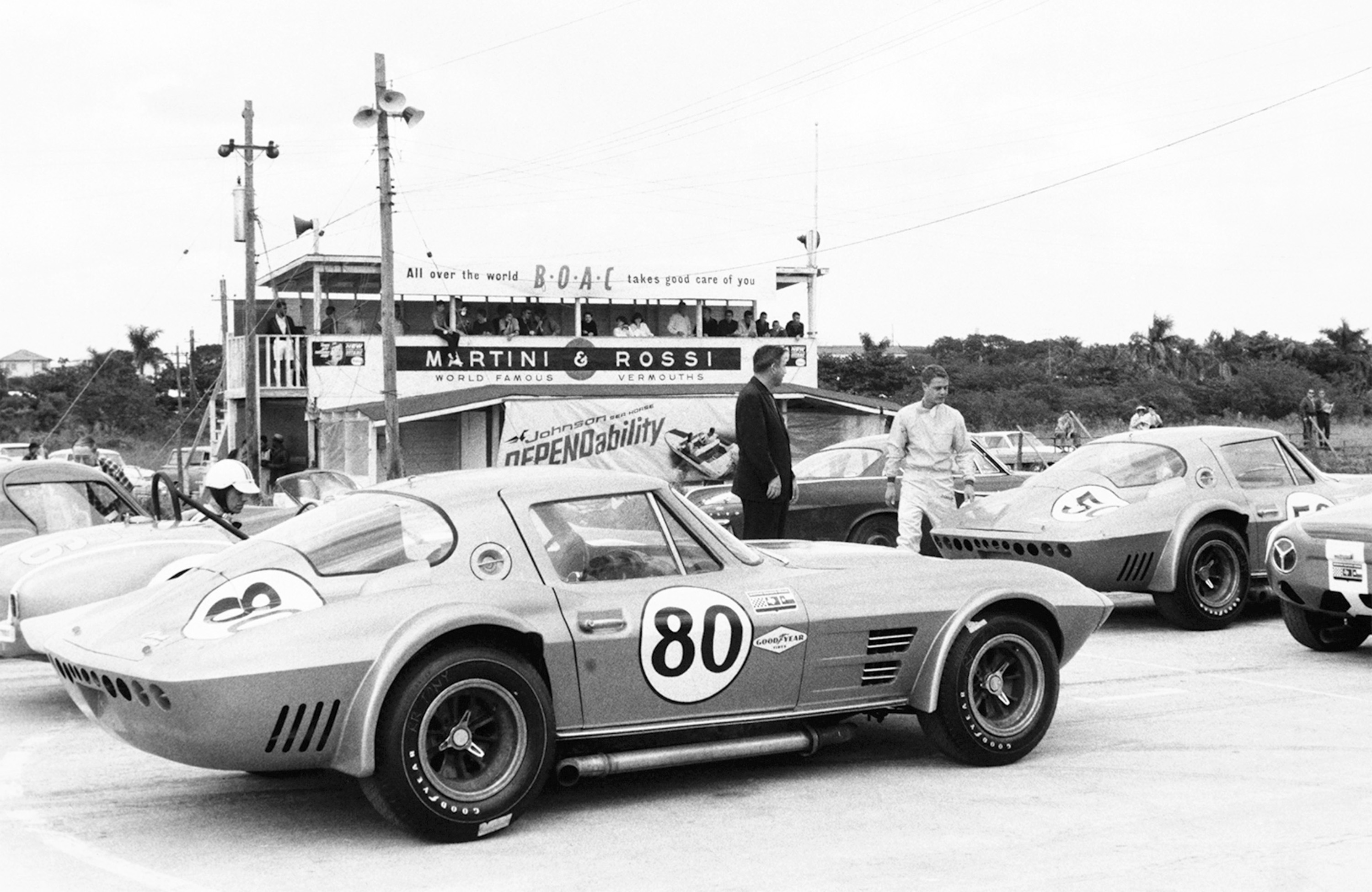
First-generation Corvettes, built between 1954 and 1962, were great-looking rides, but had archaic components beneath their sleek fiberglass skin. The ’63 was built on a shorter, lighter and stiffer frame, so its foundation was upgraded from that of the original car.
The small block Chevy V8 engine carried over unchanged, so the split-window came with a 327 cubic-inch V8 producing between 250 and 360 horsepower, depending on the configuration. Transmissions were either a four-speed manual or a two-speed automatic.
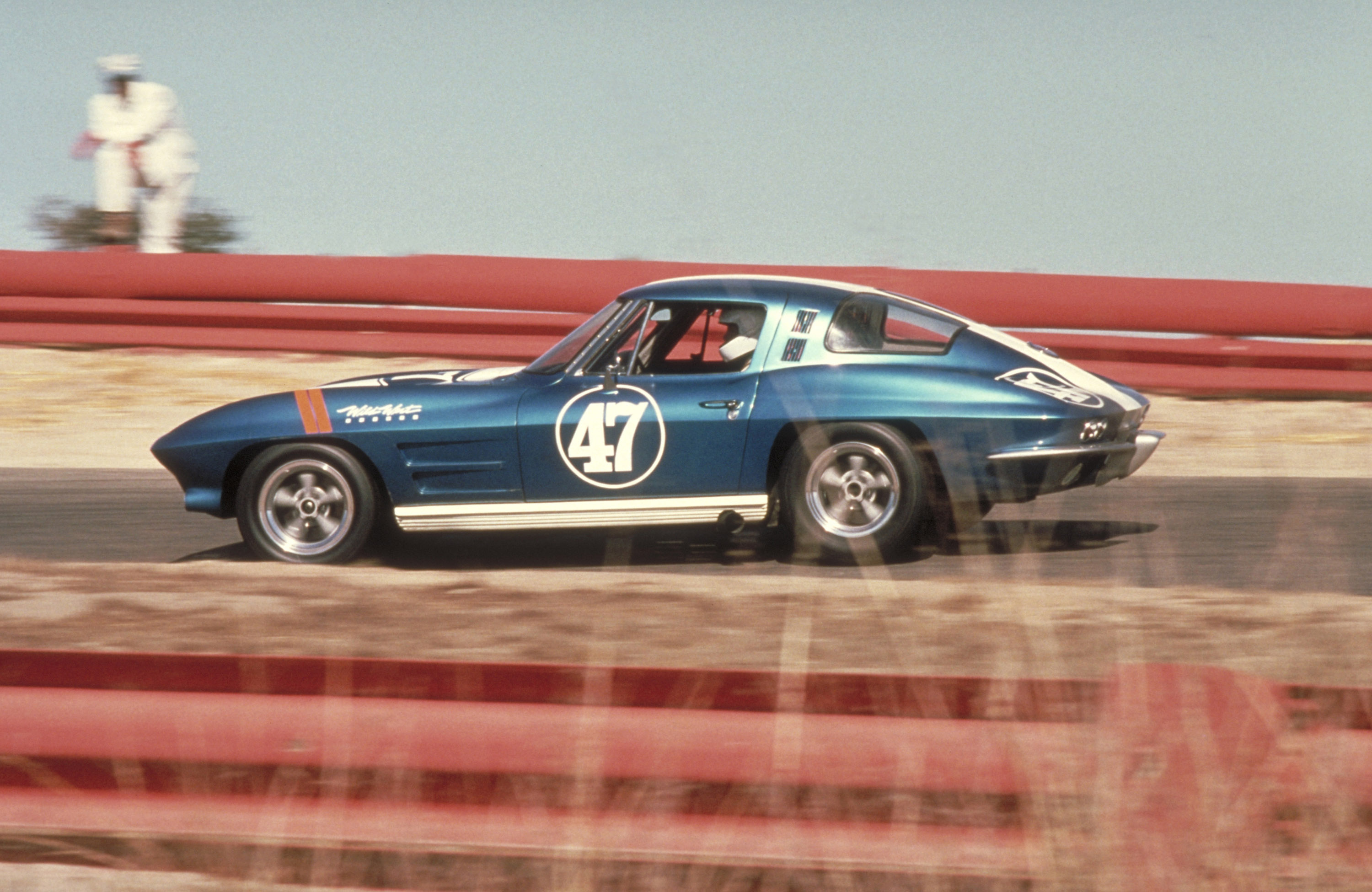
Road & Track magazine’s test at the time found that the fuel-injected 360-horsepower, four-speed manual transmission car accelerated to 60 mph in 5.9 seconds, passed the quarter-mile in 14.9 seconds and reached a top speed of 142 mph.
But if the unorthodox rear window is the ’63 Corvette’s stylistic signature, the technological high point is the car’s introduction of independent rear suspension in place of the leaf-spring solid rear axle used previously.
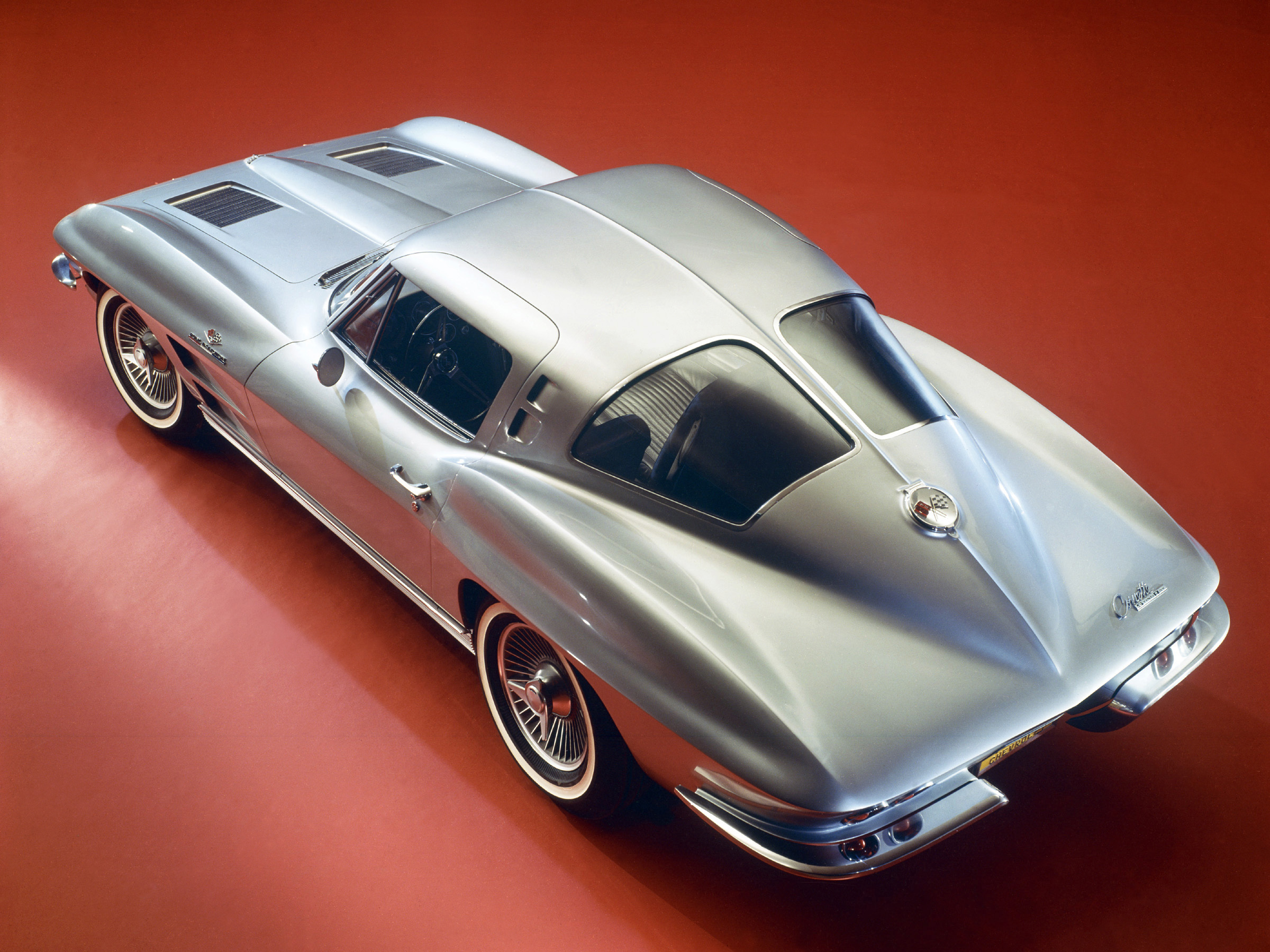
Road & Track’s test drivers found the car’s handling to be a revelation for the time. “Whether you slam the car through an S-bend at 85 or pop the clutch at 5000 rpm at the drag strip, the result is the same — great gripping gobs of traction,” the magazine effused.
That rear suspension employed an unusual element that remained as a Corvette hallmark for decades: a transverse leaf spring mounted in the center of the car so that each end of the leaf provided spring action to the wheel on that side.
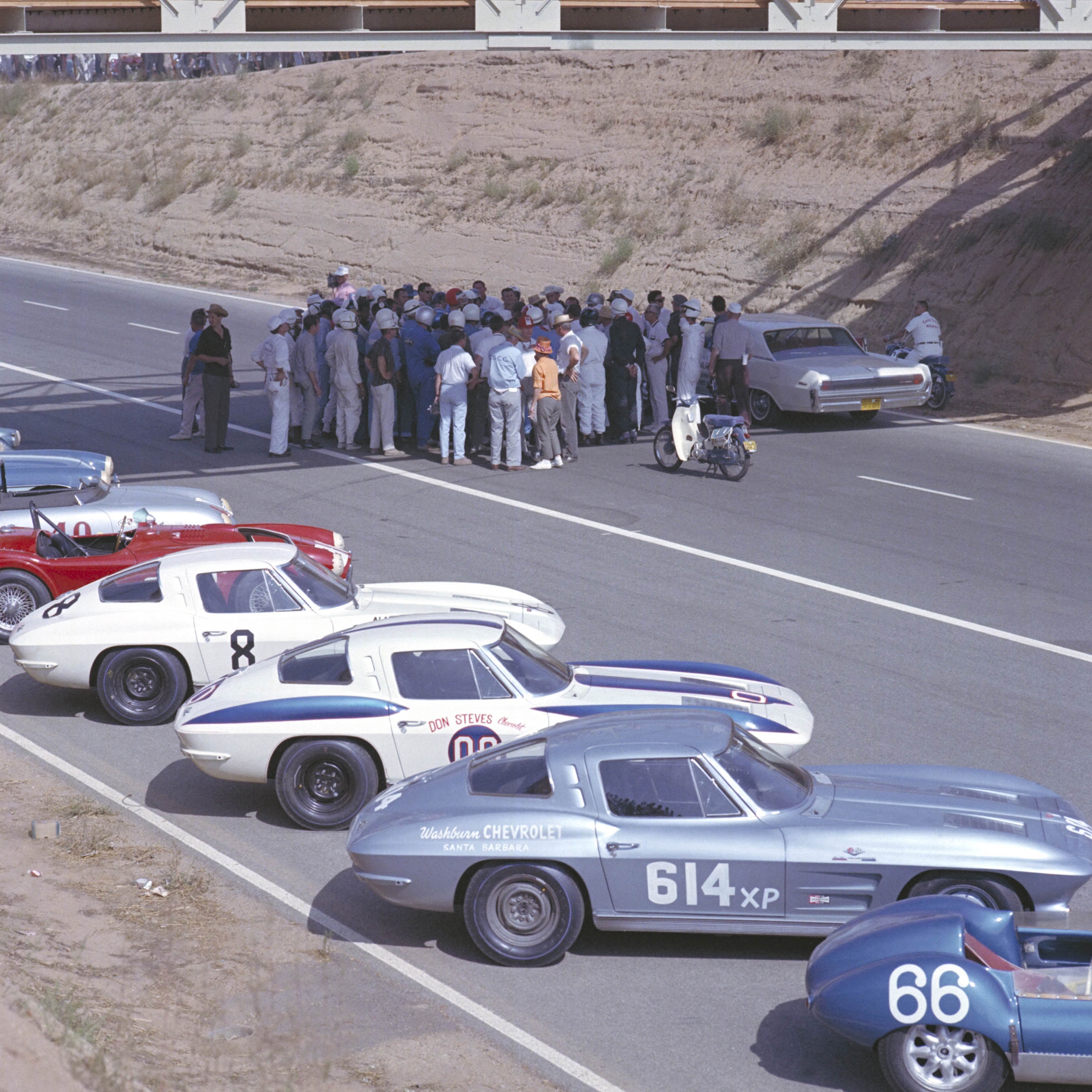
Nineteen-sixty-three also saw the debut of the Z06 option package, a bundle of racing equipment offering improved handling and an enlarged fuel tank. Chevy built only 199 of these original cars for racers, but the ‘Z06’ order number has since become legendary, and the foundation for the current high-performance version of the Corvette.
The second-generation Corvette continued its run, with a one-piece rear window, through the 1967 model year, before being replaced in 1968 by the “Coke bottle” Corvette that remained in production until 1982.
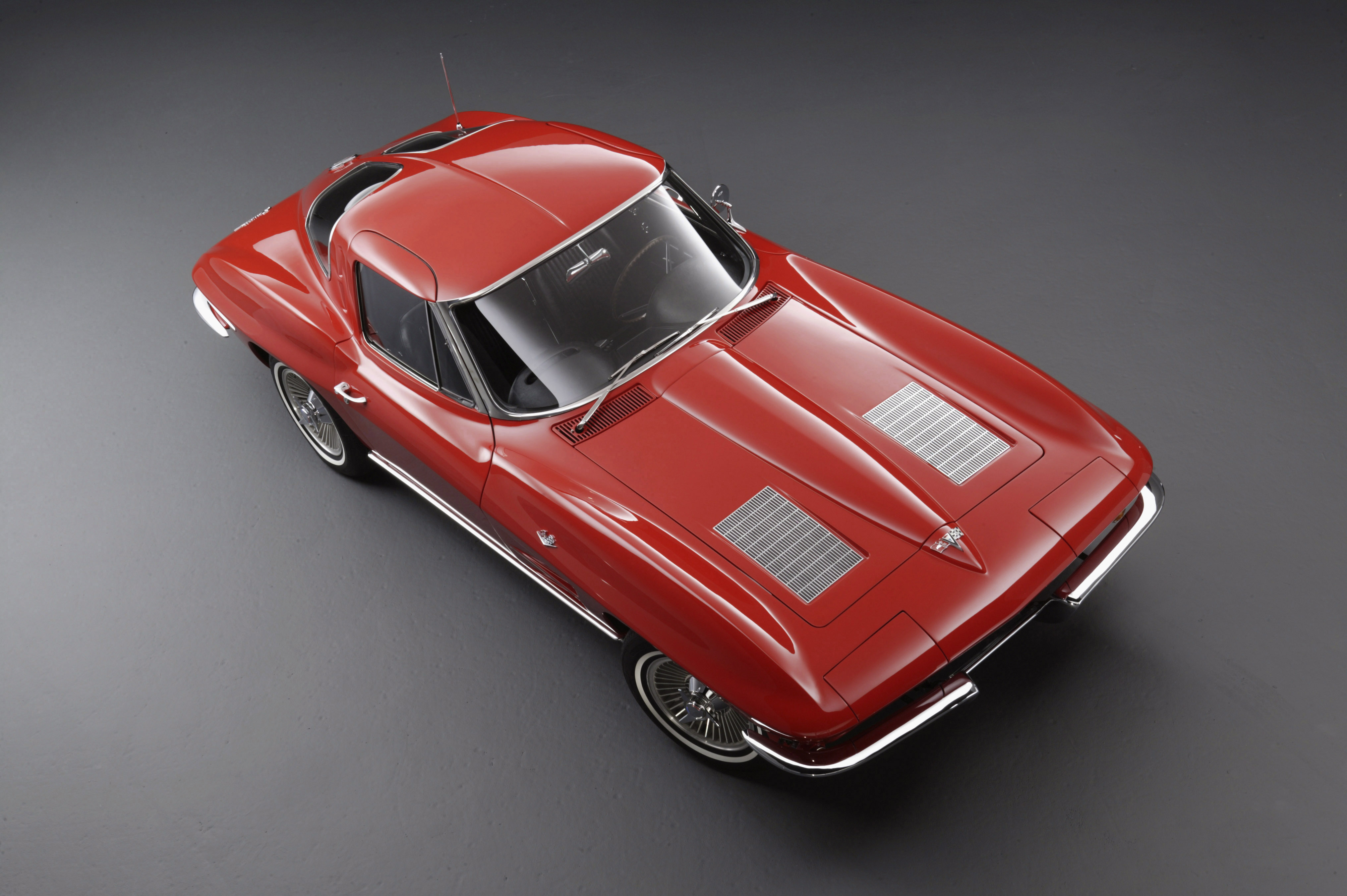
Nicknames like “split-window” and “Coke bottle” are further examples of why Corvettes make awesome poster subjects. As well as the inspiration for songs.
- Valvoline does not endorse any of the products or manufacturers listed above. Use at your own risk.
- Valvoline does not guarantee, approve or endorse the content available on linked sites.

 Dan Carney
Dan Carney